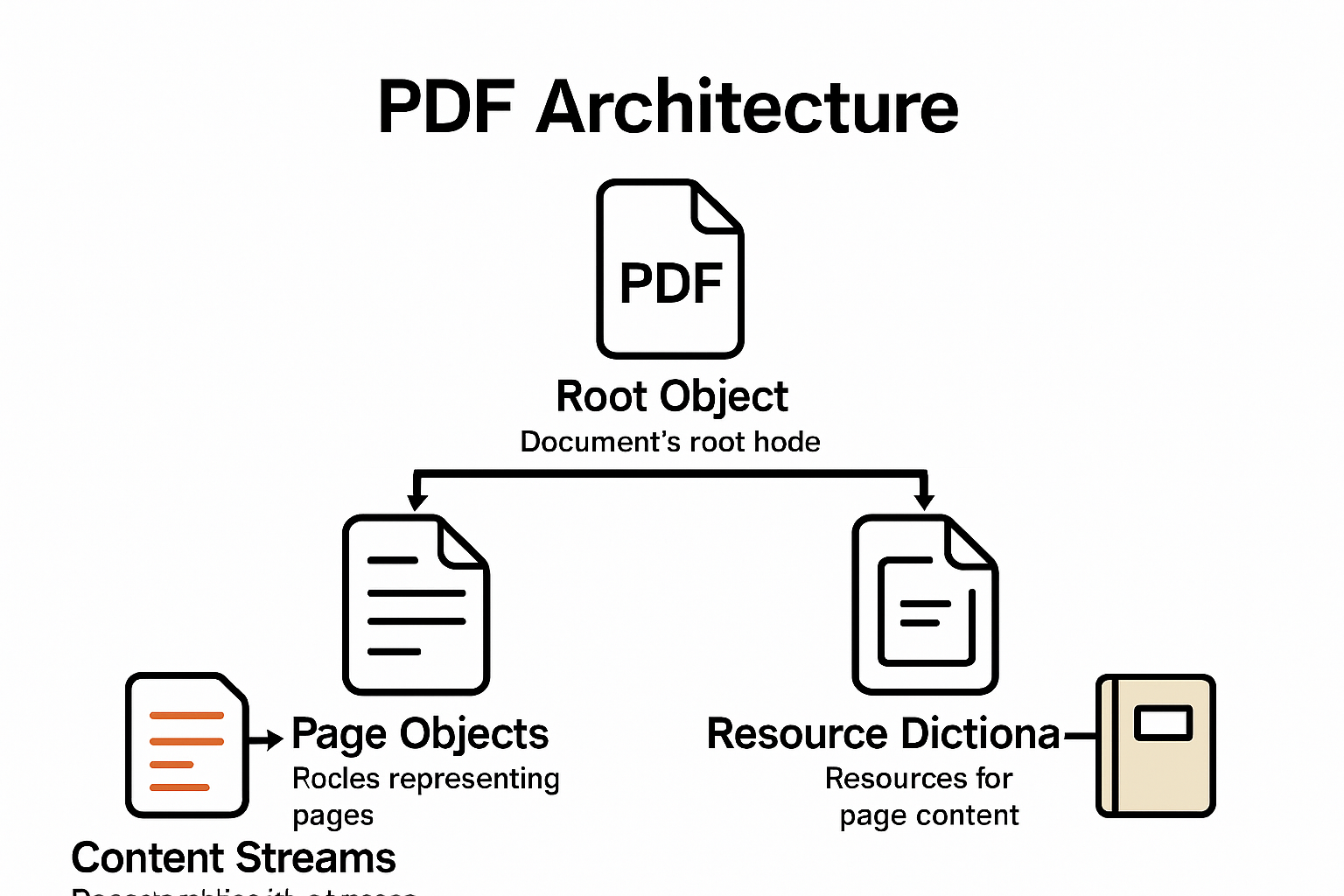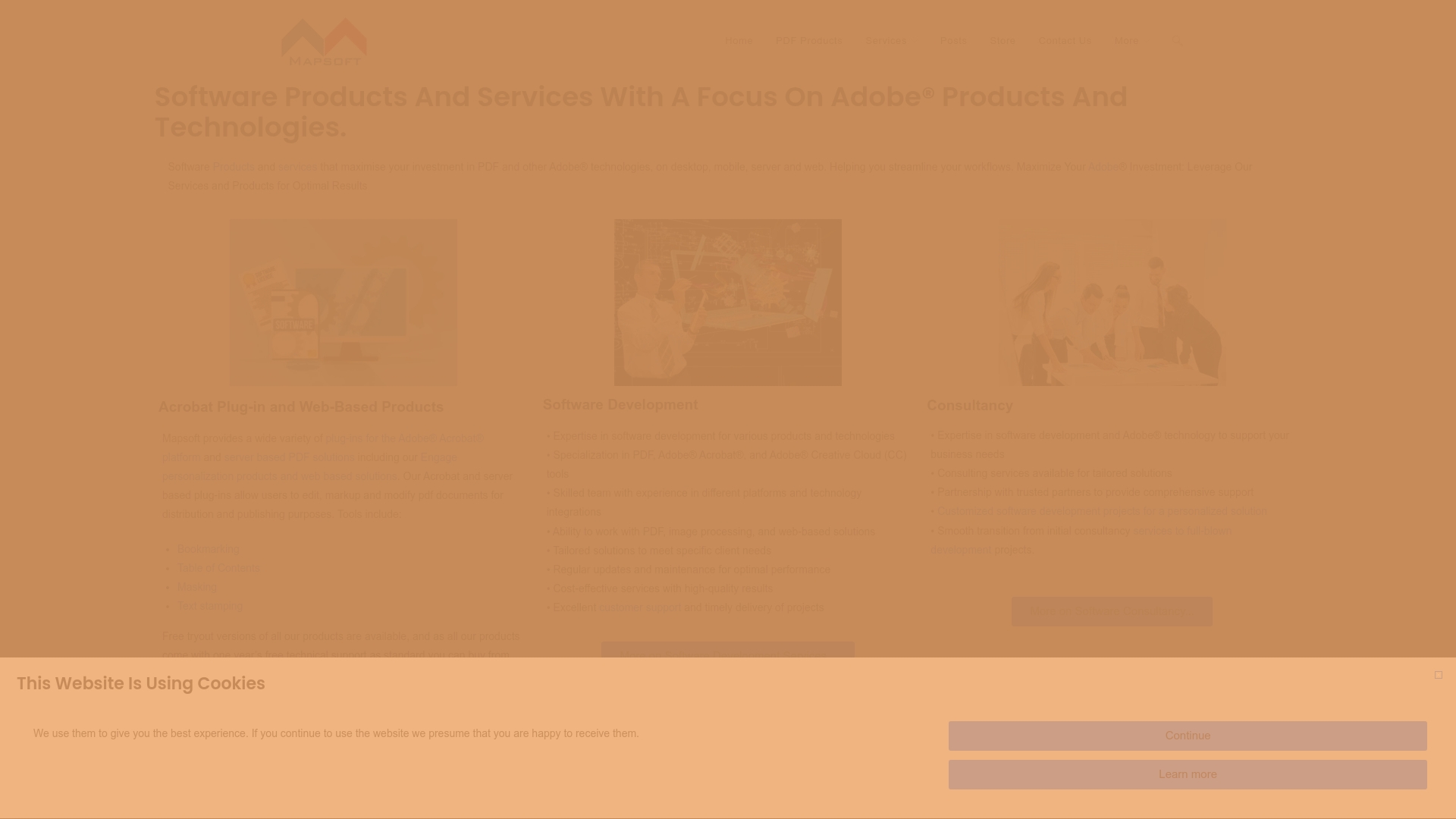PDF files run everything from contracts to compliance records and control the world’s digital paperwork behind the scenes. Most people just open, read, or send a PDF and think it’s just another document. Yet under the surface, each PDF is a web of layered data and commands and over 80 percent of business documents are stored in PDF format today. Knowing how these files are structured not only protects your sensitive information but unlocks powerful tools for efficiency and security you probably never realized were hiding in plain sight.
Table of Contents
- Understanding Pdf Structure And Standards
- Key Methods For Pdf Structure Analysis
- Benefits For Businesses Using Pdf Technology
- Best Tools For Pdf Analysis And Workflow Automation
Quick Summary
| Takeaway | Explanation |
|---|---|
| Understand PDF Structure | Recognizing PDF architecture is essential for effective document management and interoperability across platforms. |
| Utilize Advanced Analysis Methods | Techniques like DOM extraction and text segmentation enhance document understanding and optimize workflows. |
| Embrace PDF Technology Benefits | Benefits include improved operational efficiency, environmental conservation, and enhanced security measures for businesses. |
| Adopt Automation Tools | Integrating RPA and AI-powered tools can significantly streamline PDF handling and improve data accuracy. |
Understanding PDF Structure and Standards
PDF structure represents a critical foundation for document management in modern business environments. These digital documents require comprehensive understanding to ensure proper handling, preservation, and integration across various technological platforms.
The Core Components of PDF Architecture
At its fundamental level, a PDF file consists of multiple intricate layers that define how information is stored and displayed. The structure begins with a file header that identifies the PDF version, followed by a series of objects that represent different document elements. The Library of Congress details that these objects can include text, images, fonts, annotations, and interactive elements, each carefully encoded to maintain precise visual representation.
The PDF object structure allows for remarkable flexibility. Unlike simple image formats, PDFs can contain multiple types of content within a single document. This complexity enables features like searchable text, embedded multimedia, and interactive form elements. Businesses rely on this robust architecture to create documents that maintain consistent appearance across different devices and platforms.
International Standards and Specifications
The International Organization for Standardization has established comprehensive guidelines through ISO 32000-1:2008, which defines the official PDF format specifications. These standards ensure interoperability and provide a consistent framework for document creation, sharing, and archival.
For IT teams and document workflow professionals, understanding these standards is crucial. The ISO specification covers critical aspects such as file structure, compression methods, encryption protocols, and metadata handling. This standardization allows organizations to develop reliable PDF processing systems that can accurately interpret and manipulate documents from diverse sources.

Businesses implementing PDF structure analysis must recognize the format’s layered complexity. Each PDF contains a precise hierarchy of objects, including:
- Root Object: Serves as the primary reference point for document navigation
- Page Objects: Define individual page layouts and content
- Content Streams: Store actual text and graphical elements
- Resource Dictionaries: Manage fonts, images, and other embedded resources
Effective PDF structure analysis requires specialized tools that can parse these intricate layers. Learn more about advanced PDF analysis techniques to optimize your document management workflows.
The evolution of PDF standards continues to address emerging technological needs, with ongoing developments in areas like enhanced security, improved accessibility, and more efficient compression techniques. For businesses seeking to maximize document efficiency, staying informed about these structural nuances is not just recommended—it is essential.
Key Methods for PDF Structure Analysis
PDF structure analysis represents a critical process for businesses and IT teams seeking to understand, manage, and optimize digital document workflows. Advanced techniques enable comprehensive examination of PDF files beyond basic content retrieval.
Document Object Model Extraction
Research from the National Institute of Standards and Technology highlights the importance of document object model (DOM) inspection as a primary method for PDF structure analysis. This technique involves systematically breaking down the PDF into its fundamental components, revealing intricate relationships between text, images, annotations, and embedded elements.
DOM extraction allows organizations to understand document architecture at a granular level. IT professionals can identify complex hierarchies, detect potential security vulnerabilities, and map document relationships with unprecedented precision. By parsing each object’s metadata and structural characteristics, teams can develop more intelligent document processing strategies.
Advanced Text and Element Segmentation
A comprehensive university study demonstrates sophisticated text segmentation techniques that go beyond traditional parsing methods. These approaches use machine learning algorithms to categorize and classify document elements, enabling more nuanced structure understanding.
Key segmentation strategies include:
- Logical Structure Recognition: Identifying headers, paragraphs, tables, and other content blocks
- Semantic Element Mapping: Correlating text with its contextual meaning and purpose
- Hierarchical Content Tracking: Establishing relationships between different document components
Businesses can leverage these techniques to automate document processing, improve search capabilities, and create more intelligent information management systems.
Metadata and Embedded Information Analysis
Deep PDF structure analysis extends beyond visible content into embedded metadata and hidden information. Peer-reviewed research reveals that comprehensive analysis includes examining:
- Document creation timestamps
- Author and editing history
- Font and encoding information
- Version control markers
- Embedded annotations and comments
Learn more about advanced PDF analysis workflows to understand how these techniques can transform your document management approach.
By implementing these sophisticated PDF structure analysis methods, organizations can unlock deeper insights, improve information governance, and create more efficient digital document ecosystems. The key lies in understanding that PDFs are complex, multilayered documents requiring specialized examination techniques.
To help readers quickly grasp the different advanced methods used for PDF structure analysis, the following table summarizes each approach and its primary focus areas.
| Analysis Method | Main Focus Areas |
|---|---|
| Document Object Model Extraction | Break down file components, map object relationships, uncover metadata and structure |
| Text & Element Segmentation | Recognize structure (headings, paragraphs, tables), assign semantic meaning, track hierarchy |
| Metadata & Embedded Info Analysis | Examine timestamps, author/edit history, encoding info, embedded comments & annotations |
Benefits for Businesses Using PDF Technology
PDF technology offers transformative advantages for businesses seeking efficient, secure, and reliable digital document management. The strategic implementation of PDF solutions can significantly enhance organizational productivity and operational effectiveness.
Operational Efficiency and Accessibility
Research from the USDA highlights the critical importance of creating accessible electronic documents. PDF technology enables organizations to develop documents that meet stringent accessibility standards, ensuring that information remains readable across diverse platforms and for users with different technological capabilities.
Businesses can leverage PDF technology to standardize document formats, reduce file conversion complexities, and maintain consistent visual representation across multiple devices. This uniformity eliminates formatting inconsistencies that often plague traditional document management approaches, saving considerable time and reducing potential communication errors.
Environmental and Resource Conservation
The PDF Association’s research reveals significant environmental benefits associated with digital document technologies. By transitioning to PDF-based workflows, organizations can substantially reduce paper consumption, minimize energy expenditure, and support sustainable business practices.
Key environmental advantages include:
- Reduced Paper Waste: Eliminating physical document printing
- Lower Carbon Footprint: Minimizing transportation and storage requirements
- Energy Conservation: Reducing physical document management infrastructure
Discover comprehensive insights into PDF workflow optimization to understand how digital transformation can benefit your organization.
Security and Compliance Capabilities
Psychological research published in Frontiers in Psychology emphasizes that digital technologies like PDFs support clean technology initiatives and promote more robust information management strategies. PDF technology provides advanced security features that protect sensitive business information through encryption, access controls, and comprehensive audit trails.
Businesses can implement PDF solutions to:
- Establish granular user permissions
- Track document modifications
- Prevent unauthorized access
- Maintain comprehensive compliance documentation

The strategic adoption of PDF technology transcends mere document management. It represents a holistic approach to information handling that balances operational efficiency, environmental responsibility, and robust security protocols. Organizations that embrace these digital transformation strategies position themselves for enhanced productivity and competitive advantage in an increasingly digital business ecosystem.
The table below summarizes the key advantages PDF technology brings to businesses, categorizing them for easy reference.
| Benefit Category | Key Advantages |
|---|---|
| Operational Efficiency & Accessibility | Standardizes formats, reduces conversion needs, ensures access across devices/platforms |
| Environmental & Resource Conservation | Less paper waste, reduced carbon footprint, lower energy use for document management |
| Security & Compliance Capabilities | Enables encryption, controls access, audit trails, facilitates compliance documentation |
Best Tools for PDF Analysis and Workflow Automation
PDF analysis and workflow automation have become critical capabilities for businesses seeking to optimize document management processes. Advanced tools now offer sophisticated methods to extract, process, and transform PDF documents with unprecedented efficiency and accuracy.
Advanced Extraction and Processing Technologies
The PDF Association highlights the importance of leveraging cutting-edge technologies like Optical Character Recognition (OCR), Natural Language Processing (NLP), and layout analysis to transform PDF document handling. These technologies enable organizations to convert unstructured PDF content into actionable, machine-readable data.
Key technological capabilities include:
- Intelligent text extraction
- Automated metadata analysis
- Semantic content understanding
- Contextual information mapping
Businesses can now move beyond simple document scanning, implementing advanced techniques that transform PDFs from static files into dynamic, analyzable information sources.
Robotic Process Automation Integration
Research from the PDF Association demonstrates the powerful potential of integrating Robotic Process Automation (RPA) with PDF workflows. By standardizing document inputs and implementing intelligent automation strategies, organizations can dramatically reduce manual processing time and minimize human error.
RPA tools enable businesses to:
- Automatically route and categorize documents
- Extract specific data points with high precision
- Trigger workflows based on document content
- Generate comprehensive audit trails
Explore advanced PDF workflow automation techniques to understand how these technologies can transform your document management approach.
Open-Source and AI-Powered Analysis Tools
HURIDOCS introduces innovative open-source solutions that leverage artificial intelligence to analyze PDF document content and structure. These tools represent a significant leap forward in document understanding, offering organizations flexible and cost-effective alternatives to proprietary software.
Modern PDF analysis tools typically offer:
- Machine learning-powered content classification
- Multilingual document processing
- Advanced security and compliance features
- Seamless integration with existing enterprise systems
The evolution of PDF analysis tools reflects a broader trend towards intelligent, automated document management. By embracing these technologies, businesses can transform PDF documents from static repositories into dynamic, actionable information assets that drive strategic decision-making and operational efficiency.
Frequently Asked Questions
What is PDF structure analysis?
PDF structure analysis involves examining the various components and layers within a PDF document to understand its architecture. This includes analyzing objects, metadata, and relationships between different elements in order to optimize document management and processing.
Why is understanding PDF architecture important for businesses?
Understanding PDF architecture is crucial for businesses because it ensures effective document management, interoperability across platforms, and the ability to identify potential security vulnerabilities, thus enhancing operational efficiency and compliance procedures.
What techniques are used for PDF structure analysis?
Key techniques for PDF structure analysis include Document Object Model (DOM) extraction, advanced text and element segmentation, and analysis of metadata and embedded information. These methods help in understanding document layouts, categorizing content, and improving search capabilities.
How can advanced PDF analysis improve organizational efficiency?
Advanced PDF analysis can improve organizational efficiency by automating document processing, reducing manual errors, and enabling more intelligent information management. It allows organizations to transform static PDFs into dynamic data sources, which enhances decision-making and streamlines workflows.
Unlock PDF Structure for Total Workflow Control with Mapsoft
Reading about advanced PDF structure analysis may have revealed just how complex and essential it is to keep control over your digital documents. Your business needs more than just basic PDF viewing or editing. You need reliable ways to extract, segment, analyze, and automate PDF workflows to guarantee security, compliance, and efficiency. If your current tools cannot expose document object models, metadata, or enable true batch automation, your team faces risks of wasted time and information loss.

Do not let technical limitations slow you down. Mapsoft is built to handle the challenges of modern PDF management, from deep structure analysis to streamlined bulk processing. Explore Mapsoft PDF Hub to automate your PDF workflows, inspect structure, convert, redact, and authorize files with customizable tools and secure cloud-based solutions. Ready to move from frustrating manual processes to true document command? Visit Mapsoft.com now and accelerate your transformation with enterprise-grade, Adobe-centered solutions.
Recommended
- Unlock the Benefits: Why Use PDF Format for Business
- Exciting PDF Accessibility Guidelines for Business Empowerment
- Automating Business Processes with Adobe PDF Solutions – Mapsoft
- Creating Searchable PDFs: Best Practices for 2025 Workflow – Mapsoft
- The Rise in Internet Fraud Makes UK Businesses Overlook Physical Document Security: Why Secure Shredding Matters in 2025 – Venture Waste
- How to Prepare Tender Documents: A 2025 Guide for UK Businesses – BHA Couriers



